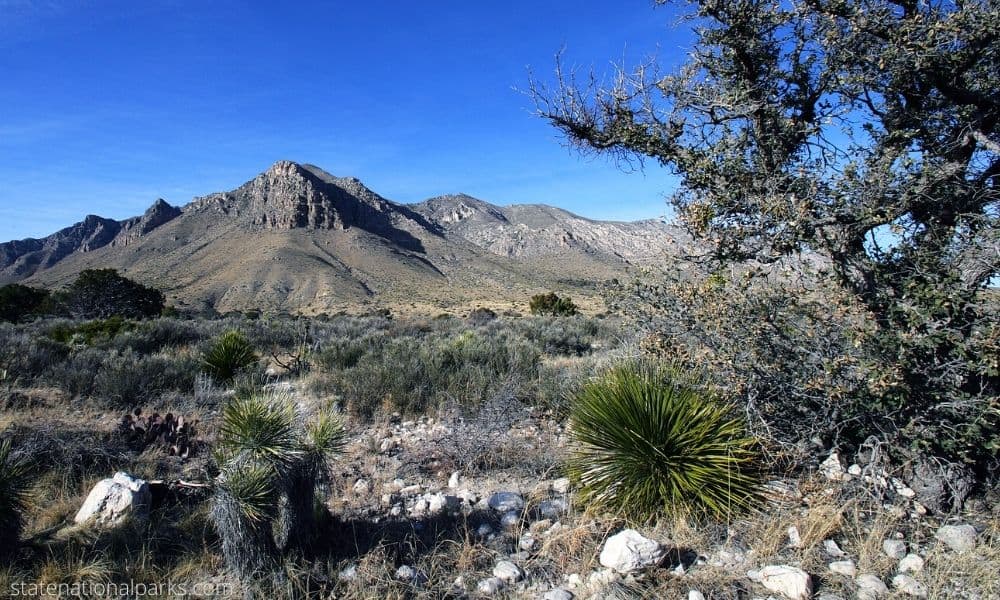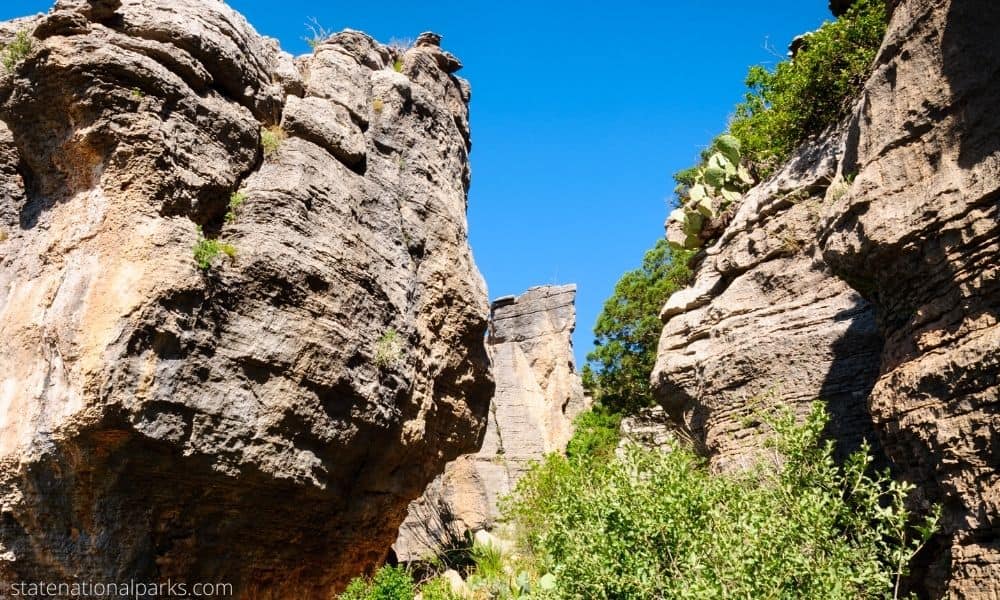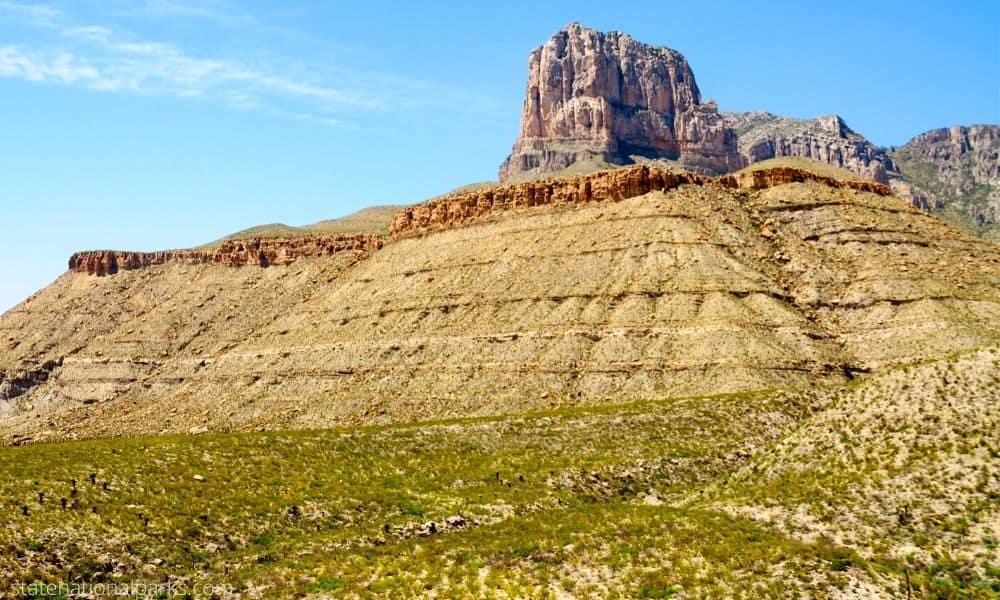 Guadalupe Mountains National Park lies in the Chihuahuan Desert of central Texas. It is recognized for its bright-white salt pans, abundant wildlife-rich grasslands and dinosaur-studded limestone mountains. The Guadalupe Peak Trail follows the low-hanging elevations of the valley floor to a tumbled belt of mesas surrounded by the azure-blue waters of the Guadalupe River. On its way to the continental divide, the trail passes three sculptured sandstone peaks rising to a height of around 5500 ft. The trail also passes through rich juniper forest. The trail traverses a saddle-shaped bend before turning left and following a rugged path up to a junction with the south rim of the Guadalupe Mountains. At the end of this traverse, the trail makes a right turn and leads to a view of the ponderosa pines and canyon walls.
Guadalupe Mountains National Park lies in the Chihuahuan Desert of central Texas. It is recognized for its bright-white salt pans, abundant wildlife-rich grasslands and dinosaur-studded limestone mountains. The Guadalupe Peak Trail follows the low-hanging elevations of the valley floor to a tumbled belt of mesas surrounded by the azure-blue waters of the Guadalupe River. On its way to the continental divide, the trail passes three sculptured sandstone peaks rising to a height of around 5500 ft. The trail also passes through rich juniper forest. The trail traverses a saddle-shaped bend before turning left and following a rugged path up to a junction with the south rim of the Guadalupe Mountains. At the end of this traverse, the trail makes a right turn and leads to a view of the ponderosa pines and canyon walls.
The trail continues to follow the crest of a limestone fossil reef covered with moss. Here, spectacular views of the surrounding desert can be enjoyed. The trail crosses a road overlooking the salt pans and enters a dry bed of sagebrush bushes. The flora and fauna here is diverse, consisting of oak, black bear, coyote, and several species of birds. At the end of the trail, a signed trailhead gives access to the Guadalupe Mountains National Park.
To get to this panoramic scene, the Guadalupe Mountains National Park rents cars for day trips. The Park headquarters offers restrooms, showers, and laundry facilities. In addition to guided car tours, Guadalupe Mountain Park offers Jeep tours on some weekends. Tourists may hike to the highest point in the park, where they may view the desert and brush lands at close range. Guadalupe Peak, which is the highest point in the Chihuahuan Desert, can be seen from nearby viewpoints.
There are a number of camping grounds at Guadalupe Mountains National Park. Six sites can be accessed from the parking lot. The sites provide restrooms, showers, and access to picnic areas. Campers may camp on any of the flat campground sites, or on grassy knolls that surround the main site.
Within the boundaries of the Guadalupe Mountains National Park are many visitor attractions. A visitor center offers maps and brochures about the wonders of the park. Guadalupe Historical Center houses a variety of artifacts about the region, its cultures, and its historic significance. The museum features a reproduction of town folktales and a replica of the historic roads of the region. The visitor center also has information about the indigenous tribes of the region.
One of the park’s biggest draws, black bears, can be found in the vicinity of the Guadalupe Mountains National Park. Black bears have been known to live in the Chihuahuan Desert, but it is unclear as to how they got into the area around Guadalupe. One speculation is that they were brought to this area by American soldiers during the illegal mining boom of the nineteenth century. Black bears have a relatively short life span; their lives span is between one and two years.
Guadalupe Mountains National Park is located in west Texas and experiences a desert climate with hot summers and cool winters. Here are some general weather patterns you can expect in the park:
- Temperatures: Summers in Guadalupe Mountains National Park are hot, with daytime temperatures often reaching into the 90s to low 100s Fahrenheit (32-38°C). Winters can be cool to cold, with daytime temperatures ranging from the mid-40s to low 60s Fahrenheit (7-16°C). Nighttime temperatures in winter can dip below freezing.
- Precipitation: Guadalupe Mountains National Park receives an average of around 11 inches (28 cm) of rainfall per year, with the majority of the precipitation falling during the summer months. Thunderstorms are common in the summer and can bring heavy downpours, lightning, and flash flooding.
- Wind: Wind is a common occurrence in Guadalupe Mountains National Park, with gusts of up to 60 mph (97 kph) possible during storms.
If you plan to visit Guadalupe Mountains National Park, it’s important to come prepared for the weather conditions. During the summer months, bring light-colored and loose-fitting clothing, sunscreen, and plenty of water. In the winter, bring warm layers and be prepared for potentially icy and snowy conditions. It’s also important to be aware of the potential for flash flooding during thunderstorms and to stay informed of weather conditions during your visit.
Related posts:
The Guadalupe Mountains National Park is located in west Texas and is known for its rugged landscape, towering peaks, and rich history. The park covers over 86,000 acres and includes the highest peak in Texas, Guadalupe Peak, which rises to...
Guadalupe Mountains National Park is one of the most stunning national parks in the United States. It boasts a diverse range of plant life, including several species of cacti. Cacti are one of the most distinctive types of vegetation ...